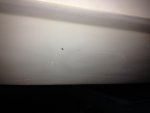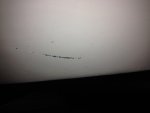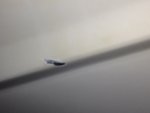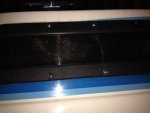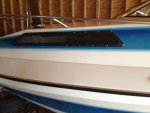SHOTGUN RUSS
Seaman
- Joined
- Nov 30, 2016
- Messages
- 53
So, the boat I was looking at in my previous posts I finally had a chance to go check it out and take for a test drive. All the key things are great with the boat but it is still 28 years old and needs some maintenance and minor repairs. I tapped the H#(( out of the hull, transom and stringers, all are solid, engine and leg are good. There are some chips and scratches in the hull and some very slight longitudinal gel coat cracks between the first and second running strake about a foot long, 2' behind the bow. Also the Cuddy windows and the plastic casing are cracked from old age. I would like to know the proper techniques to have the hull chips, scratches, cracks fixed( do not really care how they look just to preserve the hull). I would also like opinions on what to get for replacement cuddy windows and the casing because the manufacture is out of business so replacement parts are a no go. Thanks for any advise!




















